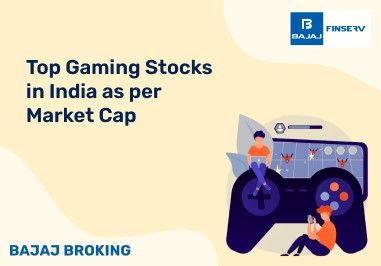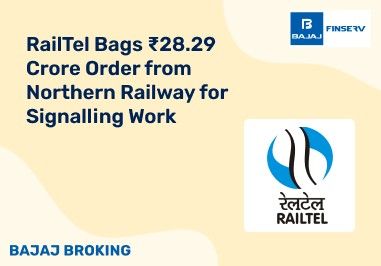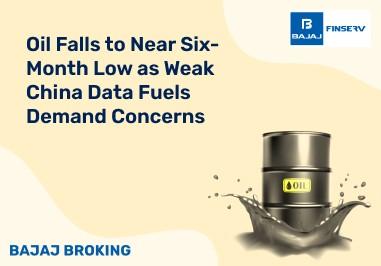BAJAJ BROKING
PDP Shipping & Projects IPO is Open!
Open a Free Demat Account
Trade Now, Pay Later with up to 4x
Track Market Movers Instantly
What is the Average Price In Stock Market?
What Is Average Price In Stock Market
An average price is a way of measuring how much an asset or security costs over a certain period of time. It is found by adding up the closing prices over that time and dividing by the number of days. If we also consider how much trading volume there is, we can get a more accurate average price for each day. This is called the volume-weighted average price (VWAP).
We can also use average price in stock market to compare the prices of different goods, such as regular gasoline, by asking different sellers or makers how much they charge over a specific time.
Average price and average return are not the same thing, even though they may sound similar.
Also Read: Volume Weighted Average Price
How Average Price is Calculated
Average price in stock market is a way of finding a single price that represents a group of prices. It is done by adding all the prices together and dividing by how many prices there are. The average in stock market helps us compare one price to a group of prices and see if it is higher or lower than normal. When we have a group of prices, the average price can make it easier to understand them by giving us one number instead of many. For example, if you make ₹104, ₹105, ₹110, and ₹115 from your investments in four months, the average price of your investments is (₹104 + ₹105 + ₹110 + ₹115) / 4 = ₹108.50. The average price of a bond is found by adding the bond’s face value and the price you paid for it and dividing by two. The average price is sometimes used to figure out how much money you will make from a bond (YTM), where the average price is used instead of the price you paid in the YTM formula.
Learning Yield To Maturity (YTM) With Average Price
Average price is a common way of measuring the cost of a bond over time. Bond investors who want to know how much they will earn from a bond that they hold until it matures can use a measure called the yield to maturity (YTM). The YTM can be estimated by using the bond’s average rate to maturity (ARTM). The ARTM shows the yield by comparing the average yearly return to the average price of the bond.
Explaining Coupon Bond Calculation
For a coupon bond, the average YTM can be calculated like this: For example, suppose an investor bought a corporate bond that pays 5% interest every year and matures in six years for ₹1,100. The bond’s face value is ₹1,000, so the investor paid more than the face value. The interest payments, or cash flows, that the investor will receive every year are 5% x ₹1,000 = ₹50. The YTM can be calculated like this:
Yield to maturity = (Cash flow + ((Face value – Market value) / Years to maturity)) / ((Face value + Market value) / 2)
₹50 + [(₹1,000 – ₹1,100) / 6] ÷ (₹1,000 + ₹1,100) / 2
₹33.33 / ₹1,050 = 3.17% The formula works by spreading the extra amount over the face value (F – P = ₹1,000 – ₹1,100 = -₹100) over the years until maturity. So -₹100/6 = -₹16.67 is how much the interest payment is reduced every year.
This means that even though the investor gets ₹50 interest every year, their actual or average return is only ₹33.33 per year (₹50 – ₹16.67 = ₹33.33) because they paid more than the face value for the bond. The YTM is the average return divided by the middle or average price of the bond. Note that, if the investor had paid less than the face value for the bond, their average return per year would be higher than the interest payment. Also, if the investor had paid exactly the face value for the bond, their average return per year would be equal to the interest rate. In this case, the YTM would also be equal to the interest rate after dividing the average return per year by the average price of the bond.
Also Read: Factors Affecting Share Prices
Volume-Weighted Average Price (VWAP) Calculation
The volume-weighted average price (VWAP) is a way of measuring the average price of a security that takes into account how much it was traded at different prices. It is useful for traders because it shows them the direction and value of a security.
Big investors and funds use the VWAP to help them buy or sell stocks without affecting the market too much. They try to do this by buying below the VWAP or selling above it. This way, they push the price back to the average, instead of away from it. Small traders tend to use VWAP more as a way of confirming the trend, like a moving average (MA). They only look to buy when the price is above VWAP and sell when the price is below VWAP.
VWAP is calculated by adding up the total value of every trade (price times volume) and then dividing by the total volume traded.
Volume-weighted average price = (Cumulative typical stock price x Volume of stocks) / Cumulative volume of stocks
How to Calculate the Weighted Average Price in a Stock Purchase?
When you buy stocks in the market, you may not get the same price for every share. Depending on the demand and supply, the market may execute your order at different prices within your specified limit. Therefore, you need to calculate the weighted average price of your purchase to know how much you paid per share.
The weighted average price is the sum of the product of each price and quantity divided by the total quantity. For example, suppose you buy 1,000 shares of ABC Company with a maximum limit of Rs.335. Your broker tells you that he bought 300 shares at Rs.325, 475 shares at Rs.329, and 225 shares at Rs.333.
To find the weighted average price, you need to multiply each price by its quantity and add them up. Then, divide the result by the total quantity. Here is the formula:
Weighted average price = (325 * 300 + 329 * 475 + 333 * 225) / 1000
= Rs.328.85
This means that your average cost per share is Rs.328.85. You can use this figure to compare with the current market price or to calculate your profit or loss when you sell the shares.
| Buy Price | Buy Quantity | By Value | Quantity Weight | Wt. Price |
| 300 | Rs.325 | Rs.97,500 | 0.3 | 97.5 |
| 475 | Rs.329 | Rs.156,275 | 0.475 | 156.275 |
| 225 | Rs.333 | Rs.74,925 | 0.225 | 74.925 |
| 1,000 shares | Rs.328,700 | Rs.328.70 |
Conclusion
The average price of a product or service is the sum of all the prices divided by the number of units sold. The average price can be used to compare different products or services, or to measure changes in the market over time. However, the average price in stock market does not always reflect the true value or quality of a product or service, as it may be influenced by factors such as supply and demand, discounts, taxes, fees, and other variables. Therefore, consumers should also consider other aspects such as features, benefits, reviews, and warranties when making purchasing decisions. The average price in stock market is a useful statistic, but it is not the only one that matters.
Share this article:
Read More Blogs
Our Secure Trading Platforms
Level up your stock market experience: Download the Bajaj Broking App for effortless investing and trading













